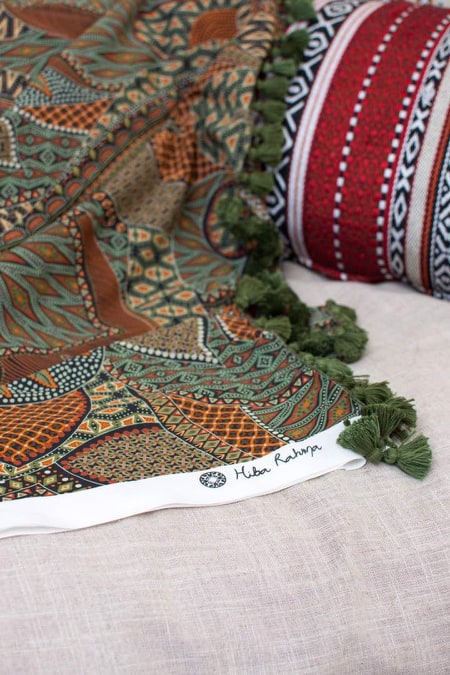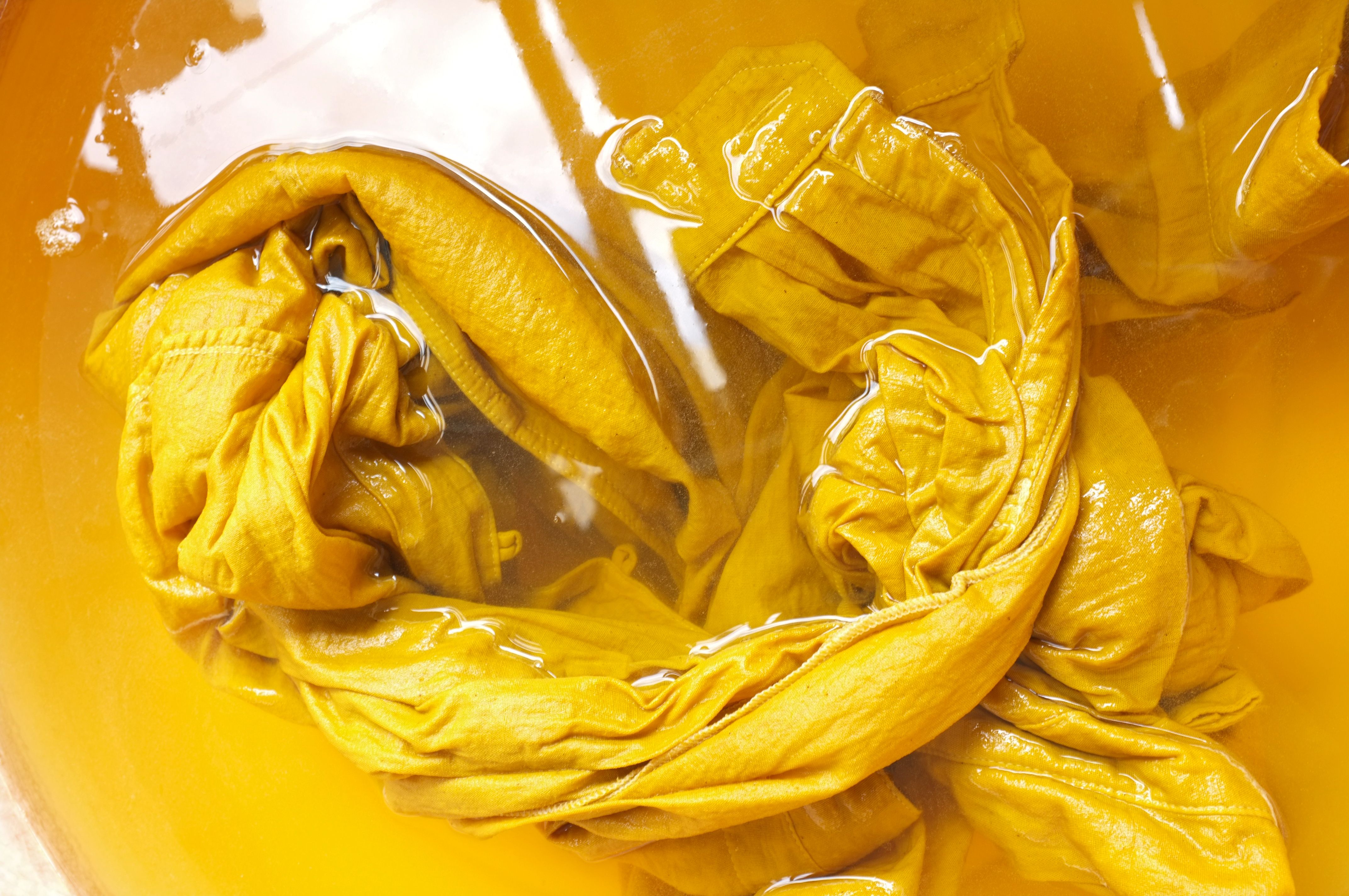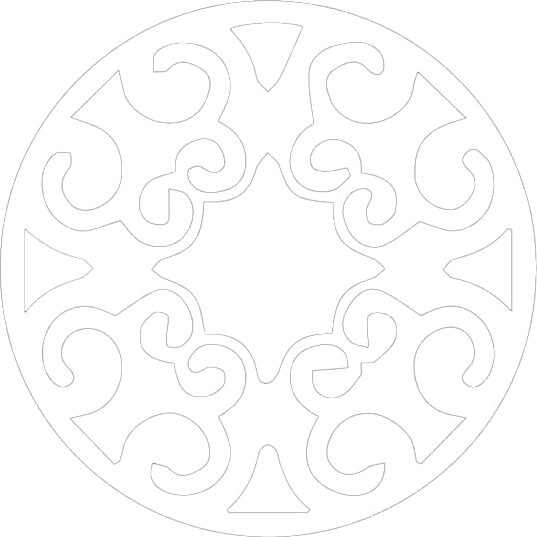Sudanese Toab
The Sudanese Toub represents the distinctive national dress for women.
Its history goes back thousands of years to Bagrawiyah civilization. Queen mother Candace is believed to be the first to wear al-Toub, which was made from special materials, designs and decorative patterns. However, it has evolved over time to the current form of the dress. Bagrawiyah was a group of villages located near Meroe, the capital of the Kingdom of Kush.
Meroe was an ancient city on the east bank of the Nile about 6 km north-east of the Kabushiya station near Shendi, approximately 200 km north-east of Khartoum, the capital of Sudan.
Archaeological sources and historical evidence suggest that the Sudanese cotton textiles and dress practices date thousands of years back This was confirmed by a group of excavations of stone rings that were used as weights in the weaving process and placed on vertical looms, which indicates the antiquity of cotton textiles in Sudan.
Professor #Sa'dia_El-Sulhi, a Sudanese visual artist and fashion designer, says: “The Sudanese Toub is an old yet renewed dress, it is a manifestation of civilization, a title of culture, a cover for the body, and a preserver of its temperature”.
In the past, the dress consisted of two pieces made from the same cloth, the veil and a wrap-around cloth. Then, it became a one-piece dress, which is the current Sudanese Toub.
The (Tirqa) was known among the Pharaohs, and it is like the Shilluk (Laur), and the Indian (Saree). It is a single wrap that covers the entire body and is sometimes worn over underwear and sometimes worn by itself.
Also, some men wear it braided on the shoulders over the Araqi and vest. The most notable wearers are the Beja and Butana tribes, as men of Sufi ways in the same style.
The traditional Toub is nine meters long and 90 cm wide. It is divided into two parts.. Then, they are joined to become four and a half meters long and 180 cm wide. Itis called a (toab fitqatain).
The Modern Toub has become a single piece made of one cloth that is 150 cm wide and four and a half meters long. It is wrapped around the body and over the head. Either a dress or a blouse and skirt are worn underneath it, and it is known as the full toab.
Currently, due to the rapid rhythm of modern life, tie-waist toab emerged, which are tied around the waist, cover the head and drop from one end on the left shoulder. This type is light and easy to move in.
The predecessors of the traditional Sudanese Toub were Ganja and Zaraq, also known as (Nila) in reference to its indigo color. They were made from Sudanese cotton threads. After that, plain (Kirib) clothes came into fashion, which were brought by merchants from Upper Egypt known in Sudan as (Naqada). This type of toab is characterized by its relatively soft black color. It was bought by luxuriant women, as it was called (white Egypt), then the (al-Farda) garments emerged, which are also made of pure Sudanese cotton, and the oriental farda or fotta came from India.
Over time, imported clothes began to control the market and eventually overtaken traditional garments.
Swiss factories were the pioneers in manufacturing high-quality exemplary Sudanese Toub. It manufactures natural floral, embroidered, plain, London message, Abu Qujijah, and jacquard totals. Germany and Austria were famous for digital totals, England for cold totals, and France for chiffon and silk. Japan was famous for its kanebo voile cotton, while India and China used a variety of different materials, like cotton, polyester, viscose, chiffon, silk and shiny and woven garments.
Sudanese expatriates were the first to import the culture of the Italian dress, which was distinguished by the bright white edge, which left its mark in the fashion world for its high-quality materials and soft colors and textures.
The Sudanese Toub is a social cornerstone because of its association with the human life cycle rituals, starting with birth, marriage and joy, and ending with death and grief. The Red Toub is bride's wedding dress (Jartiq).
As for weddings and happy occasions, Sudanese women proudly wear colorful, embroidered and decorated pieces.
On the contrary, they wear plain clothes of calm and cold colors for formal occasions and to the houses of beka (funeral houses).
Working women are distinguished by wearing white toabs (plain kirib), which is mentioned on a song that says (the woman in plain kirib made my heart soft as a pillow).
Sometimes it is decorated with floral and colored patterns or embroidered with bright white or light-colored silk.
If the husband dies, the widow must wear a white dress made of natural cotton throughout the waiting period. Previously, it was made from Damur or Dablan, and it is a symbol of sadness and mourning, contrary to other parts of the world, in which black clothes are customary during funeral ceremonies.
Currently, the dress is not exclusively worn in the cities and regions of Sudan, as it is very popular in many other countries in the region. As women from Mauritania, Djibouti, Somalia, Chad, Eritrea, as well as India and some Moroccan women (Polis Ario) wear different Toub variations and designs!
Each country is distinguished by slight differences in the way women wear Toub, in addition to slight difference in materials and colors.
There is no specific authority entrusted with choosing or creating names for the Sudanese Toub.
Historically, according to the researchers who carried out the documentation process, the names of garments are closely related to social, economic, cultural, political events and public figures. And they are promoted by merchants and feminists. The most prominent names in the 1950s include, but not limited to: (Al-Istiqlal) after the independence of Sudan, (Al-Alam) and (Oyoun Zarrouk) after Mubarak Zarrouk, a handsome lawyer who was a political star rising from the Democratic Unionist Party at the time. And in the 1960s, the (kader) toab emerged, which was associated with economic advancement and the expansion of the employment circle among women during the tenure of Sharif Hussein al-Hindi as the Minister of Finance in Sudan.
It is said that women started to threaten their husbands with an old saying at the time: (Al kader dress or a divorce is a bless).
After the assassination of the Afro-Congolese fighter Patrice Lumumba, the (Lumumba), (the fire station), (Oyoun Katkout) and (Abu Kajija) toabs were popular.
In the 1970s the (the diplomatic corps), (Najda), (Dalaa), Al Madghout, Al chiffon, and Georgette dresses were in fashion, but in the eighties (oil pipelines) and (London message) toabs took over.
Many Sudanese artists wrote songs about the Toub, for instance, AbuArki AlBakhit sings:
"I saw the Toub and couldn't find anything more beautiful. This Toub, and the woman wearing it, how are they doing??"
And Wardi sang in 'Al-Qamar': "Al-Zaraq, looks like silk on her..!"
And Ahmed Al-Mustafa sang:
"The beauty my heart desired, I saw in a mourning toab..!
What if I crossed her mind for once, and what if she fulfilled her promise...!"
Moreover, Ali Ibrahim Al-Lahw sang: "Look at my beloved in a decent Toub..!
The toub decorated your beauty, my beloved..! ❤"
Attached is a recorded interview on Al-Jazeera channel with visual artist Saadia El-Salahi,
Latest Articles
Cotton
2022-08-30
#Gezira_Scheme is one of the most important gravity irrigation schemes in Sudan. It was established… Read moreWeaving in Sudan
2022-08-23
The textile industry is an old industry in Sudan. It started as a traditional rural… Read moreHand Embroidery
2022-08-01
#Embroidery is the craft of decorating fabric or other materials using a needle to apply… Read moreTextile Printing
2022-08-29
The first printed textiles were produced in India and China more than four thousand years… Read moreNatural Dyes
0000-00-00
Most natural dyes are derived from plant sources such as barks, berries, flowers, leaves, and… Read moreHiba Rahma © 2025 - All rights reserved.







